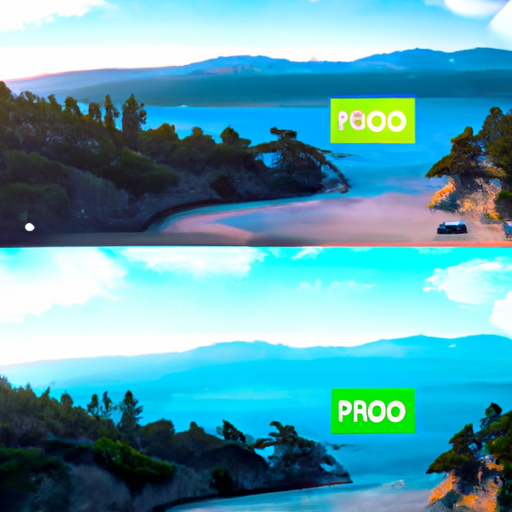Zoho CRM vs Pipedrive: A Comprehensive Comparison for Sales Teams
Table of Contents
- Introduction
- How Zoho CRM and Pipedrive Compare: A Comprehensive Overview for Sales Teams
- Exploring the Pros and Cons of Zoho CRM and Pipedrive for Sales Teams
- What Sales Teams Need to Know About Zoho CRM and Pipedrive
- Comparing the Features of Zoho CRM and Pipedrive for Sales Teams
- Evaluating the Cost of Zoho CRM and Pipedrive for Sales Teams
- Q&A
- Conclusion
“Discover the Right CRM for Your Team: Zoho CRM vs Pipedrive – A Comprehensive Comparison.”
Introduction
When it comes to sales teams, having the right CRM (Customer Relationship Management) software is essential. It can help you manage customer relationships, track sales performance, and streamline processes. Two of the most popular CRM solutions are Zoho CRM and Pipedrive. In this article, we will compare the two solutions and provide a comprehensive overview of their features and benefits. We will look at their pricing, user experience, customer support, and more. By the end of this article, you should have a better understanding of which CRM solution is best for your sales team.
How Zoho CRM and Pipedrive Compare: A Comprehensive Overview for Sales Teams
When it comes to sales teams, selecting the right customer relationship management (CRM) software is essential for success. Two of the most popular CRM solutions are Zoho CRM and Pipedrive. In this comprehensive overview, we will compare the two solutions to help sales teams make an informed decision.
First, let’s look at the features of Zoho CRM. It offers a wide range of features, including lead management, contact management, sales automation, and analytics. It also provides a mobile app, allowing sales teams to access their data on the go. Additionally, Zoho CRM integrates with a variety of third-party applications, such as Google Apps, QuickBooks, and MailChimp.
Now, let’s take a look at the features of Pipedrive. It offers a comprehensive set of features, including contact management, sales automation, and analytics. It also provides a mobile app, allowing sales teams to access their data on the go. Additionally, Pipedrive integrates with a variety of third-party applications, such as Salesforce, Slack, and Zapier.
When it comes to pricing, Zoho CRM offers a free plan, as well as paid plans starting at $12 per user per month. Pipedrive offers a free trial, as well as paid plans starting at $12.50 per user per month.
In terms of user experience, Zoho CRM is easy to use and navigate. It has a modern, intuitive interface that makes it easy to find the information you need. Pipedrive also has a modern, intuitive interface, but it can be a bit overwhelming for new users.
Finally, when it comes to customer support, both Zoho CRM and Pipedrive offer excellent customer service. Zoho CRM offers 24/7 phone and email support, as well as a comprehensive knowledge base. Pipedrive offers 24/7 phone and email support, as well as a comprehensive knowledge base and online tutorials.
In conclusion, both Zoho CRM and Pipedrive offer excellent features and customer service. However, Zoho CRM is easier to use and navigate, and it offers a free plan. Pipedrive is more comprehensive and offers a free trial, but it can be a bit overwhelming for new users. Ultimately, the decision of which CRM solution to use will depend on the needs of the sales team.
Exploring the Pros and Cons of Zoho CRM and Pipedrive for Sales Teams
The use of customer relationship management (CRM) software is becoming increasingly popular among sales teams. Two of the most popular CRM solutions are Zoho CRM and Pipedrive. Both of these solutions offer a range of features and benefits that can help sales teams to better manage their customer relationships and increase their sales. However, there are also some potential drawbacks to using either of these solutions. In this article, we will analyze the pros and cons of Zoho CRM and Pipedrive for sales teams.
The primary benefit of using Zoho CRM is its comprehensive suite of features. Zoho CRM offers a wide range of features, including lead management, contact management, sales automation, and analytics. This makes it easy for sales teams to track and manage their customer relationships. Additionally, Zoho CRM is highly customizable, allowing sales teams to tailor the software to their specific needs.
On the other hand, Pipedrive is a more focused CRM solution. It is designed specifically for sales teams, and its features are tailored to the needs of sales professionals. Pipedrive offers features such as lead scoring, sales forecasting, and pipeline management. This makes it easier for sales teams to track and manage their customer relationships.
However, there are some potential drawbacks to using either of these solutions. Zoho CRM can be difficult to use for those who are not familiar with the software. Additionally, the software can be expensive, especially for larger organizations. Pipedrive, on the other hand, is relatively easy to use, but it lacks some of the more advanced features offered by Zoho CRM.
In conclusion, both Zoho CRM and Pipedrive offer a range of features and benefits that can help sales teams to better manage their customer relationships and increase their sales. However, there are also some potential drawbacks to using either of these solutions. It is important for sales teams to carefully consider their needs and evaluate the pros and cons of each solution before making a decision.
What Sales Teams Need to Know About Zoho CRM and Pipedrive

Sales teams need to understand the differences between Zoho CRM and Pipedrive in order to make the best decision for their organization. Both platforms offer a range of features and capabilities that can help sales teams increase efficiency and productivity.
Zoho CRM is a comprehensive customer relationship management (CRM) platform that helps sales teams manage customer relationships, track sales activities, and automate processes. It offers a range of features, including lead management, contact management, sales forecasting, and analytics. It also provides integration with other Zoho products, such as Zoho Books and Zoho Projects.
Pipedrive is a sales pipeline management platform that helps sales teams manage their sales process. It offers features such as contact management, lead tracking, sales forecasting, and analytics. It also provides integration with other third-party applications, such as Google Apps and Slack.
When comparing Zoho CRM and Pipedrive, it is important to consider the features and capabilities that each platform offers. Zoho CRM is a comprehensive CRM platform that offers a range of features and capabilities, while Pipedrive is a sales pipeline management platform that offers a more focused set of features.
In terms of pricing, Zoho CRM is more expensive than Pipedrive. However, Zoho CRM offers a range of features and capabilities that may be worth the additional cost. Additionally, Zoho CRM offers a free trial period, which can be used to evaluate the platform before making a purchase.
When deciding between Zoho CRM and Pipedrive, it is important to consider the features and capabilities that each platform offers, as well as the cost. Sales teams should also consider their specific needs and requirements when making a decision. By understanding the differences between Zoho CRM and Pipedrive, sales teams can make an informed decision that will help them increase efficiency and productivity.
Comparing the Features of Zoho CRM and Pipedrive for Sales Teams
When it comes to selecting a customer relationship management (CRM) system for sales teams, two of the most popular options are Zoho CRM and Pipedrive. Both of these systems offer a range of features that can help sales teams to manage their customer relationships and increase their sales. In order to determine which system is best suited for a particular sales team, it is important to compare the features of each system.
Zoho CRM offers a range of features that are designed to help sales teams manage their customer relationships. It includes a contact management system that allows users to store and organize customer information, as well as a sales pipeline that helps users to track the progress of their sales. It also offers a range of automation tools that can help sales teams to streamline their processes and increase their efficiency. Additionally, Zoho CRM offers a range of reporting and analytics tools that can help sales teams to gain insights into their customer relationships and sales performance.
Pipedrive is another popular CRM system for sales teams. It offers a range of features that are designed to help sales teams manage their customer relationships and increase their sales. It includes a contact management system that allows users to store and organize customer information, as well as a sales pipeline that helps users to track the progress of their sales. Additionally, Pipedrive offers a range of automation tools that can help sales teams to streamline their processes and increase their efficiency. It also offers a range of reporting and analytics tools that can help sales teams to gain insights into their customer relationships and sales performance.
When comparing the features of Zoho CRM and Pipedrive, it is clear that both systems offer a range of features that can help sales teams to manage their customer relationships and increase their sales. However, there are some differences between the two systems. For example, Zoho CRM offers a range of automation tools that can help sales teams to streamline their processes and increase their efficiency, while Pipedrive offers a range of reporting and analytics tools that can help sales teams to gain insights into their customer relationships and sales performance. Ultimately, the choice of which system to use will depend on the specific needs of the sales team.
Evaluating the Cost of Zoho CRM and Pipedrive for Sales Teams
The cost of customer relationship management (CRM) software is an important consideration for sales teams. Two popular CRM solutions are Zoho CRM and Pipedrive. This analysis will evaluate the cost of these two solutions for sales teams.
Zoho CRM is a cloud-based CRM solution that offers a range of features, including contact management, sales automation, and analytics. The cost of Zoho CRM depends on the number of users and the features required. The Standard plan costs $12 per user per month, while the Professional plan costs $20 per user per month. Both plans include unlimited storage and support.
Pipedrive is a CRM solution designed specifically for sales teams. It offers features such as contact management, sales automation, and analytics. The cost of Pipedrive depends on the number of users and the features required. The Essential plan costs $12.50 per user per month, while the Advanced plan costs $24.90 per user per month. Both plans include unlimited storage and support.
When evaluating the cost of Zoho CRM and Pipedrive for sales teams, it is important to consider the features offered by each solution. Zoho CRM offers a range of features, including contact management, sales automation, and analytics. Pipedrive offers similar features, but it is designed specifically for sales teams. Both solutions offer unlimited storage and support.
In conclusion, both Zoho CRM and Pipedrive offer a range of features for sales teams. The cost of each solution depends on the number of users and the features required. Zoho CRM offers a Standard plan for $12 per user per month and a Professional plan for $20 per user per month. Pipedrive offers an Essential plan for $12.50 per user per month and an Advanced plan for $24.90 per user per month. When evaluating the cost of these two solutions for sales teams, it is important to consider the features offered by each solution.
Q&A
Q1: What are the main differences between Zoho CRM and Pipedrive?
A1: The main differences between Zoho CRM and Pipedrive are the pricing structure, features, and user experience. Zoho CRM is a more comprehensive CRM solution with a wide range of features, while Pipedrive is a more focused sales pipeline management tool. Zoho CRM is also more affordable than Pipedrive, but it does not offer the same level of customization and reporting capabilities.
Q2: What are the advantages of using Zoho CRM over Pipedrive?
A2: Zoho CRM offers a more comprehensive set of features than Pipedrive, including a wide range of customization options, powerful reporting capabilities, and a user-friendly interface. It also offers a more affordable pricing structure than Pipedrive.
Q3: What are the advantages of using Pipedrive over Zoho CRM?
A3: Pipedrive is a more focused sales pipeline management tool than Zoho CRM, offering a more intuitive user experience and a range of features designed to help sales teams manage their pipelines more effectively. It also offers a more affordable pricing structure than Zoho CRM.
Q4: Does Zoho CRM offer any integrations with other software?
A4: Yes, Zoho CRM offers a range of integrations with other software, including popular applications such as Google Apps, Microsoft Office, and Salesforce.
Q5: Does Pipedrive offer any integrations with other software?
A5: Yes, Pipedrive offers a range of integrations with other software, including popular applications such as Google Apps, Microsoft Office, and Salesforce.
Conclusion
In conclusion, Zoho CRM and Pipedrive are both excellent CRM solutions for sales teams. Zoho CRM offers a comprehensive suite of features and customization options, while Pipedrive offers a more streamlined approach with a focus on sales pipeline management. Ultimately, the choice between the two will depend on the specific needs of the sales team. Both solutions offer a range of features and pricing plans to suit any budget, so it is important to evaluate each one carefully to determine which is the best fit for the team.





